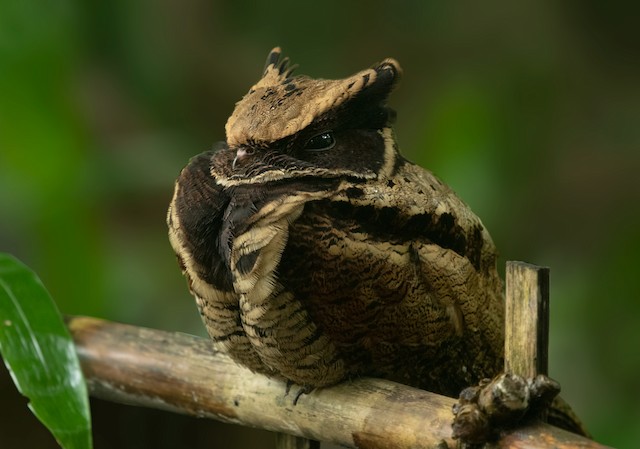The eared nightjar, a member of the nightjar family, is a fascinating bird that thrives in the darkness of the night. Despite its elusive nature, there’s much to learn about this intriguing species. Let’s explore 10 interesting facts about the eared nightjar for bird enthusiasts to the curious-minded.
1. A Family of Mystery and Intrigue
Eared nightjars belong to a family of nocturnal birds known for their cryptic behavior and unique physical traits. These birds are found across various continents, each species adapting to its specific habitat.
2. The Distinctive Ears
The most notable feature of the eared nightjar is the feathered tufts on their heads, resembling ears. These ‘ears’ serve no hearing purpose but play a crucial role in their camouflage, breaking up their silhouette and helping them blend into their surroundings.
3. Masters of Camouflage
Eared nightjars have an uncanny ability to blend into their surroundings. Their mottled plumage mirrors the textures of tree bark or leaves, making them nearly invisible during the day when they roost.
4. Nocturnal Lifestyle
Eared nightjars are active at night, a trait that aids in their hunting and mating activities. Their nocturnal habits also protect them from daytime predators and allow them to exploit a niche with less competition for food.
5. A Diet of Flying Insects
The diet of the eared nightjar primarily consists of flying insects. They catch these insects mid-air, a testament to their excellent flying skills and precise maneuvering in the dark.
6. The Enigmatic Calls
Eared nightjars are known for their distinctive calls, which vary between species. These calls, often haunting and melodic, are used for communication, especially during the breeding season.
7. Breeding and Nesting Behaviors
Eared nightjars have unique nesting behaviors. They lay their eggs on the ground, often in open areas or on a fallen log, relying on their camouflage to protect their nests from predators.
8. Diverse Habitats
The eared nightjar species are adapted to a wide range of habitats, from dense forests to open scrublands. This adaptability highlights their resilience and evolutionary success.
9. Flight and Hunting Techniques
The flight of the eared nightjar is silent and agile, an adaptation for their nocturnal hunting. They use their wide mouths to snatch insects from the air, a skill that requires precision and agility.
10. Conservation Status
The conservation status of eared nightjars varies among species. While some are abundant, others face threats from habitat loss and environmental changes. Understanding and protecting these birds are crucial for maintaining biodiversity.
Eared nightjars, with their unique characteristics and nocturnal habits, are a remarkable group of birds. These 10 facts provide just a glimpse into their mysterious world. As we continue to learn more about eared nightjars, we gain a deeper appreciation for the diversity and complexity of avian life.
FAQs on Eared Nightjar
- What distinguishes an eared nightjar from other birds?
- Eared nightjars are distinguished by their unique feathered tufts that resemble ears, their excellent camouflage abilities, and their nocturnal habits. They are also known for their silent flight and distinct calls, which set them apart from other bird species.
- Why are eared nightjars so hard to spot?
- Eared nightjars are difficult to spot due to their cryptic plumage, which allows them to blend seamlessly into their surroundings. This camouflage, combined with their nocturnal lifestyle and tendency to remain motionless during the day, makes them challenging to detect.
- Where can one typically find eared nightjars?
- Eared nightjars are found in various habitats, ranging from dense forests to open scrublands. Their distribution spans across continents, adapting to local environments which makes them a widespread group within the nightjar family.
- What is the primary diet of eared nightjars?
- The primary diet of eared nightjars consists of flying insects. They are skilled hunters, catching their prey mid-air during their nocturnal flights. This diet plays a crucial role in controlling insect populations in their habitats.
- How do eared nightjars communicate?
- Eared nightjars communicate using a range of vocalizations, including distinctive calls that are often described as haunting and melodic. These sounds are used for various purposes, such as attracting mates, signaling danger, or establishing territories.
Featured image courtesy: www.creaturescorner.com
